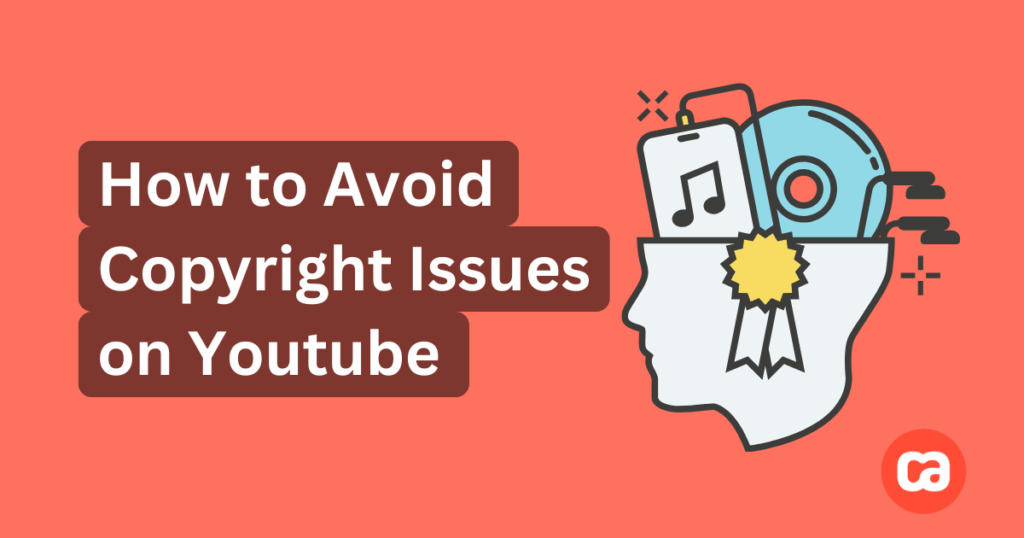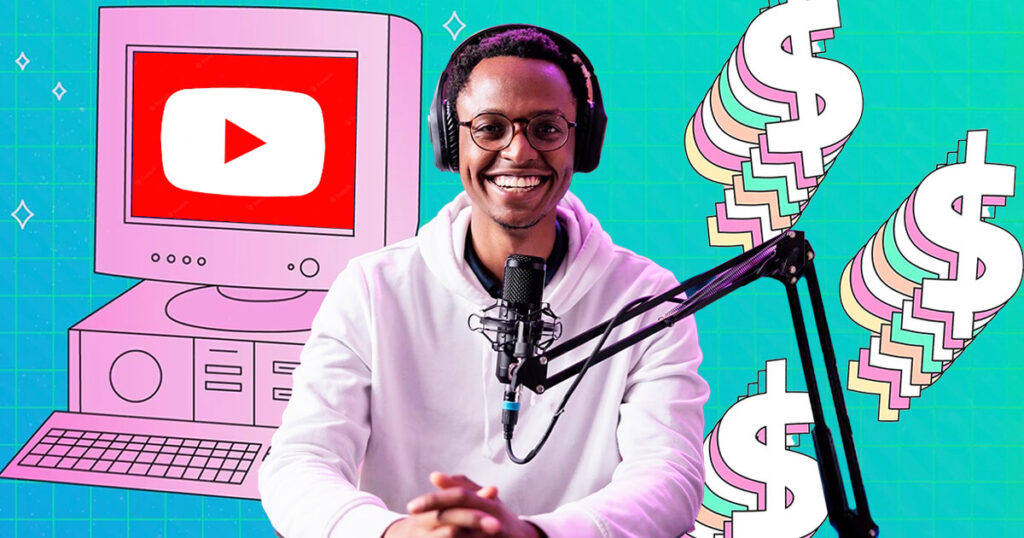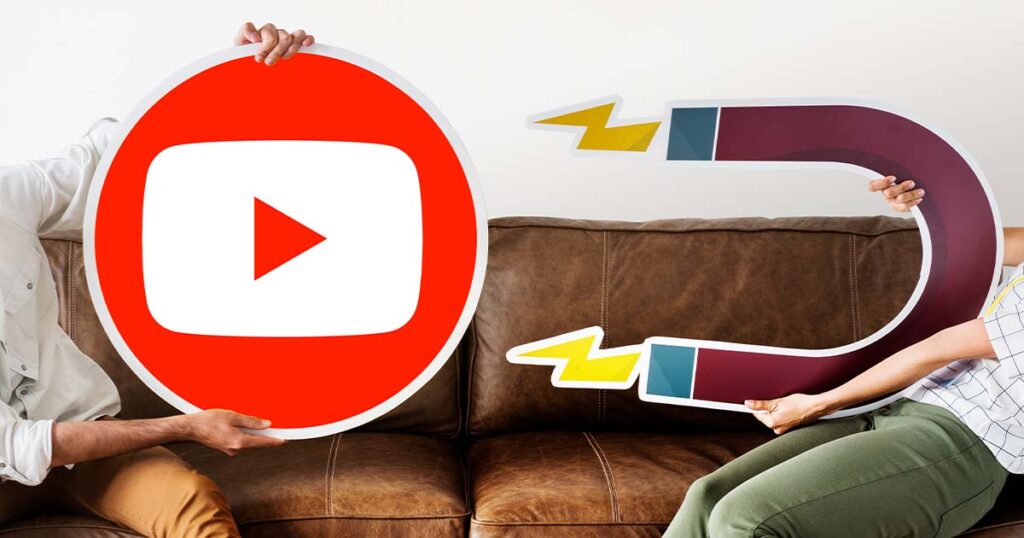So, you’re putting your heart and soul into making awesome videos for YouTube. That’s great! But there’s this thing called copyright that you gotta know about to keep your channel running smoothly and avoid any nasty surprises.
Think of it like this, copyright is basically saying that if you create something original, a video, a song, a cool graphic, it’s yours, and nobody else can just take it and use it without your permission.
Understanding Copyright Basics for Your YouTube Channel
When you’re on YouTube, you’re surrounded by tons of creative stuff. Copyright is the rule that says who owns that stuff.
It automatically protects your videos, your music, your writing, and even your artwork as soon as you create them. Now, here’s the important bit, if you want to use something in your video that someone else made, a catchy song, a funny movie clip, a cool image you found online, you usually need their permission.
It’s crucial to understand what types of content are typically covered by copyright on YouTube. These include:
- Audiovisual Works: Your videos, movies, and TV show clips.
- Sound Recordings and Musical Compositions: Songs and instrumental tracks.
- Written Works: Scripts and articles.
- Visual Works: Images, graphics, and artwork.
Copyright doesn’t cover general ideas or just plain facts. It’s about how you show those ideas. And a big thing to remember is that even using just a little bit of someone else’s copyrighted source without permission can cause problems.
How YouTube Manages Copyright: Content ID and Strikes
Content ID
YouTube has a pretty smart system to handle copyright, and the main tool they use is called Content ID. It’s like a robot that checks every new video against a giant list of copyrighted sources that owners have uploaded. If it finds a match, the owner of that copyrighted material can decide what happens:
- Block the video: Prevent it from being viewed.
- Monetize the video: Run ads and potentially collect the revenue.
- Track viewership: Simply monitor how the video is performing.
Copyright Strikes
Now, a copyright strike is more serious. This happens when a copyright owner sends a formal legal notice to YouTube saying you’ve used their media without permission. Getting these strikes can really mess with your channel:
- 1st Strike: You’ll likely need to complete “Copyright School”. Your video will be removed, and you might face temporary restrictions, like being unable to live stream.
- 2nd Strike: The live stream restriction period may be extended.
- 3rd Strikes: Your account and all associated channels can be terminated, and all your videos will be removed.
If you receive a copyright strike, you have a few options:
- Wait 90 days: The strike will expire after this time, provided you complete Copyright School after the first strike.
- Request a retraction: Contact the copyright owner and ask them to withdraw their claim.
- Submit a counter notification: If you believe the strike was a mistake or your use qualifies as fair use, you can dispute it . Be aware that this can potentially lead to legal action from the copyright owner.
Smart Strategies to Steer Clear of Copyright Trouble
The best way to stay out of copyright trouble is to be smart about what you put in your videos . Here’s the lowdown:
- Create Your Own Original Content: This is the safest route. Film your own footage, record your own music, design your own graphics, and write your own scripts.
- Embrace Royalty-Free and Public Domain Materials: Many websites offer music and video footage under licenses that allow you to use them without paying royalties for each use. Always check the specific license terms.
- Get Explicit Licenses and Permissions: If you want to use specific copyrighted material, contact the copyright owner directly to obtain permission . Make sure to get written permission that clearly outlines how you can use the content. This might involve paying a licensing fee.
- Best Practices for Specific Content:
- Music: Prioritize original music or music with clear licenses. Use the YouTube Audio Library or other reputable royalty-free services. Be aware that even cover songs have copyright implications.
- Video Clips: Stick to your own footage or clips you have permission to use. If using short clips for commentary or criticism, be prepared to argue fair use, but avoid using substantial portions.
- Images: Use your own photos and graphics or get them from royalty-free stock image sites with proper licenses. Be wary of images found through general internet searches. If using Creative Commons images, provide proper attribution.
Understand Fair Use
Fair Use is a legal doctrine that allows limited use of copyrighted material without permission for purposes like criticism, commentary, news reporting, teaching, research, and parody. US courts consider four factors when determining fair use:
- The purpose and character of your use: Is it transformative, adding new meaning? Non-commercial uses are more likely to be considered fair use.
- The nature of the copyrighted work: Using factual works is more likely to be fair use than using creative works.
- The amount and substantiality of the portion used: Using a small amount is generally better than using a large portion.
- The effect of your use on the market for the original work: Does your use harm the copyright holder’s ability to make money from their work?.
Important Note: Fair Use is decided by judges, not YouTube, and it can be really confusing. YouTube sometimes helps creators with fair use videos that get taken down, but don’t count on fair use as a guaranteed way to use copyrighted stuff. If you’re not sure, it’s always best to play it safe or even ask a lawyer.
Common Copyright Myths That Can Get You in Trouble
It’s easy to fall for common misconceptions about copyright on YouTube. Here are some myths to watch out for:
- Giving credit is enough: Simply crediting the copyright owner doesn’t grant you permission to use their content.
- “Everyone else is doing it”: Just because others are using copyrighted content doesn’t mean they have the rights to do so . Copyright owners might choose to enforce their rights selectively.
- Purchased content is fair game: Buying a song on iTunes or a movie on DVD usually grants a license for personal enjoyment, not for public distribution on YouTube.
- Adding a disclaimer protects you: Phrases like “no copyright infringement intended” don’t provide legal protection.
- Short samples are always okay: As mentioned earlier, even a few seconds can be considered infringement.
Some Pain Points of Copyright for Youtube Creators
Even though YouTube tries to manage copyright, many creators get frustrated with the system . Here are some common gripes:
- Too Much Automation: Sometimes, the Content ID system makes mistakes and flags videos that are actually okay.
- Hard to Appeal: Smaller creators often feel like it’s tough to get help when they think a claim or strike is wrong.
Confusion About Fair Use: Lots of creators get confused about what counts as fair use and feel like their videos are unfairly targeted. - Money Issues: Sometimes, if there’s a copyright claim, the money your video makes goes to the person who made the claim, even if you’re fighting it.
- Channels Getting Deleted by Mistake: There have been cases where channels were deleted because of copyright claims that were later taken back, and the creators couldn’t get their channels back.
These issues show that while YouTube has rules, they’re not always perfect and can be a source of stress for creators.
Be a Responsible YouTube Creator!
Dealing with copyright on YouTube might seem like a pain, but if you understand the basics and follow some simple rules, you can keep your channel safe and sound. Focus on making your own unique videos, be smart about using other people’s stuff, and always respect their rights.
By doing this, you’ll be building a great channel and helping to make YouTube a fair and creative place for everyone. So go out there, create amazing things, and stay copyright clear!



